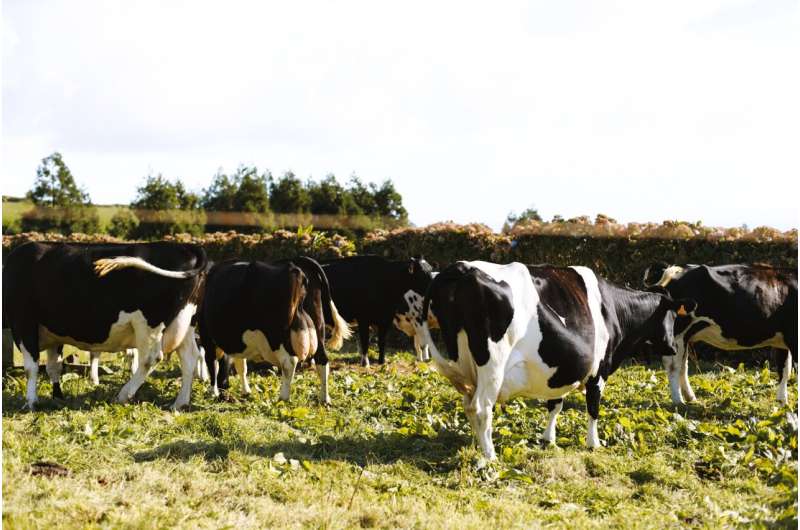This article has been reviewed according to Science X's editorial process and policies. Editors have highlighted the following attributes while ensuring the content's credibility:
fact-checked
trusted source
proofread
Examining the double-edged methane emissions from dairy cattle farms

Intensive dairy cattle farming is a significant source of methane emissions, a potent greenhouse gas, that contributes to global warming and thus climate change. A study in the International Journal of Global Warming has looked at emissions in part of Turkey from 2016 to 2020 to determine what might be done to reduce emissions of this gas.
The study undertaken by researchers in Poland and Turkey focused on methane emissions resulting from enteric fermentation and manure management and showed that over the four-year period, dairy cattle farming in the region contributed more than 20 million tons of carbon dioxide equivalent into the atmosphere. Almost 1 million tons was attributed to methane emissions with more than 98% of those due to enteric fermentation and less than 2% due to manure management.
The team's findings underscore the significance of enteric methane emission from cattle and highlights the need to address this issue. The researchers suggest that carefully selecting silage feeds and improving their nutritional content with minerals and vitamins could be used to reduce the amount of methane gas produced in the alimentary tract of the cattle and so cut emissions.
The findings have broader implications beyond Turkey. As the global population continues to grow, the demand for livestock production, including dairy cattle farming, is expected to rise. Consequently, mitigating methane emissions is of increasing importance, necessitating strategies involving dietary adjustments and producer awareness.
The work also alludes to how broader measures, such as tree-planting, afforestation, initiatives and the promotion of renewable energy sources, might also enhance overall environmental sustainability. Balancing emission reduction with the economic viability of dairy cattle enterprises presents an ongoing environmental challenge.
This research has demonstrated that strategies that focus on manure management are perhaps misplaced and that feed selection should be looked at more closely as a way to ameliorate methane emissions from dairy cattle. Given that there will be a demand, and a growing demand at that, for dairy products in the foreseeable future, the need to address methane emissions remains a pressing one.
More information: N.A. Atilgan et al, Determination of global warming potential of dairy cattle farms, International Journal of Global Warming (2023). DOI: 10.1504/IJGW.2023.133982
Provided by Inderscience





















